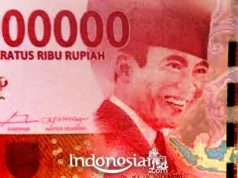Visiting Lake Toba North Sumatra, don’t forget to take the time to cross to Samosir Island, visit Huta Siallagan which is still thick with Batak culture. In this village, we will be greeted by the hospitality of the local community and a statue with Batak script as a sign of welcome to Huta Siallagan.
Huta Siallagan’s Cannibal Village. Photo: Pesona Indonesia
Huta in Batak means village, while Siallagan is taken from the name of King Siallagan. This village area was built by a Batak family with the Siallagan clan, then led by King Siallagan.
Entering Huta Siallagan we will be greeted with a row of bolon houses, or traditional Batak houses. There are about 8 hundreds of years old bolon housing units that have different functions. Some are used as the king’s and family’s house, some are used as shelters.
Meanwhile, if you pay attention, the front of the house has several distinctive ornaments, namely the jaga dompak (mask with a scary expression), lions (lion head statue), lizard statue, and breast symbol.
The existence of these ornaments is not only to beautify the house, but has its own meaning. As explained by Jansen Sitinjak, one of the tour guides at Huta Siallagan.
As the guard and the lions function to ward off evil spirits. Meanwhile, the lizard which is called boraspati is an animal that can live everywhere, both in luxury homes and in simple homes. While the symbol of the breast symbolizes wealth and generous people who must be able to help others.
“Breast symbol can also be interpreted as to the extent to which the Batak people migrate, don’t forget your parents and don’t forget your hometown, the point is don’t forget that your hometown can be interpreted like that,” said Jansen.
What makes Huta Siallagan special is the presence of a large stone which is then formed into chairs and tables, known as Batu Parsidangan. A stone that is a silent witness in a trial for a person who committed a crime. This ancient site consists of a stone arrangement consisting of nine chairs made of stone, there are seats for kings, shamans, and for people who commit crimes.
These crimes could include stealing, killing, raping, and being an enemy spy. The punishment was no joke. If the crime is minor, then a penalty will be given in the form of pasung. However, if the crime is classified as a serious crime, the perpetrator will be sentenced to beheaded or cut off the head.
“The execution date will also be determined from the criminal’s weakest day or when the good day is. The reason is, the average person who dares to commit crimes is believed to have black magic. Here the name is known as Manitiari or primbon Batak tribe, ”explained Jansen.
After the day of beheading the culprits will be placed on a stone table with their eyes covered by ulos cloth. Not only that, Jansen said that the law of beheading was made so dramatically. First of all the criminals will be given a meal containing a shaman’s potion to weaken black magic.
Then the offender will be beaten using a single stick, which is a magical wooden stick carved with the head of a human and an animal, with long hair on top.
Meanwhile, when executed, the criminals’ clothes will first be removed to ensure that no amulet remains. After that, all parts of the body will be cut into pieces. If you have been injured and bleeding, you can be sure that the black magic that usually makes people immune, has disappeared.
Do not stop there, if the body has been bleeding, it will be doused with acidic water until the criminal gets weaker. After that, then beheading was carried out.
What makes it even more creepy is that after the execution process is complete it is said that the heart and heart of the criminal will usually be eaten to increase the king’s strength. Meanwhile, the head that has been separated from the body will be placed on a round table, while the body will be placed on a square table.
Then, Janse explained that the perpetrator’s body would be thrown into Lake Toba for seven days and seven nights. During that time, residents are prohibited from carrying out activities in the lake.
While his head will be placed in front of the entrance gate of Huta Siallagan, as a warning to other kings or the people not to do the same thing. After rotting, the head will be thrown into the forest behind the village, and then the residents will be prohibited from doing activities in the forest for 3 days.
According to Janse, the whole story of this “sadistic” punishment finally ended in the 19th century, when Christianity began to enter and was introduced by the German missionary, Ludwig Ingwer Nommensen to the Lake Toba area.
Now, the beheading law and the cannibal story are certainly no longer applicable. Currently Huta Siallagan has transformed into a tourist village. Like at the very back of Huta Siallagan, there are now several souvenir stalls selling various knick-knacks that are suitable for souvenirs such as clothes, ulos cloth, key chains, and various other objects.
Source : Indonesia































